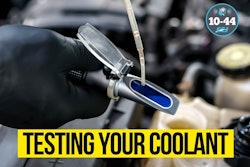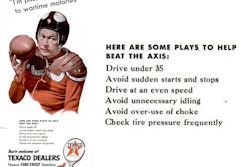
ROADCHECK IS LESS THAN 2 WEEKS AWAY.
If you missed CCJ's AMA with CVSA Inspection Specialist Jeremy Disbrow, click below to receive a recorded version. We received almost 300 questions and this 60 minutes could be a powerful tool in getting and keeping your trucks compliant.
CCJ, in partnership with Bestpass, hosted an one-hour webinar Wednesday, featuring Commercial Vehicle Safety Alliance's (CVSA) Roadside Inspection Specialist Jeremy Disbrow. Much of Disbrow's 25 years of experience is focused on commercial motor vehicle safety, enforcement, outreach and training, and over the course of Wednesday's 60 minute webinar Disbrow fielded nearly 300 questions submitted by members of the trucking community, providing an instructional how-to on passing a commercial vehicle roadside inspection.
If you missed the webinar but still want the information, you can click here to sign up and have a recording of the event sent to you.
CVSA's North American Roadcheck inspection spree is May 14-16. The focus of this year's campaign are tractor protection controls in the air system and alcohol and controlled substance possession, but inspectors will also be on the lookout for common violations like brake and tire wear issues, and hours of service, among many others.
"So every year, year after year, it seems like lights are right at the top of the list," Disbrow said. "It's the low-hanging fruit. It's the stuff that should be caught on a pre-trip inspection, usually. I understand a light can go out in transit, but more often than not, it was probably out when you left. So just getting out of the truck, doing a walk around, and taking care of those obvious items like lights, tires, things like that, those are always right at the top of the list. I think in 2023, our number one violation somewhere around the 300,000 violation mark nationwide, not just at Roadcheck, but for the year, was lighting devices. So that's definitely a very common one."
How to pass a roadside inspection: CVSA answers your Roadcheck 2024 questions
"Obviously, (all lights are) important; all the required lights are important, but definitely, the rear facing lights on the rear most vehicle are the ones that are going to put you out-of-service for sure. So brake lights, turn signals, those are going to put you out-of-service on the rear. And then headlights, of course. If those aren't working, that'll put you out-of-service, too."
So what are some common roadside inspection triggers?
It's the lack of the light, I think, a lot of the time that you're talking about. So again, it's that low-hanging fruit. So if you're a trooper and you're sitting in the median watching traffic go by at 65 miles an hour. What are you going to be able to see at that speed? And it's the obvious stuff, right? So, lighting that's out is always a real good flashing red light. It pulls your attention. Cargo securement is another one of those that you can definitely see, they're very obvious. So those are things you can expect to get pulled in for. Any other obvious defects like that are going to stand out to an inspector.
Would it make sense for CVSA to put out some guidance on LED lights and the percent of diodes that can be inoperable?
The short answer is yes. The long answer is CVSA, FMCSA, NHTSA and a bunch of industry groups are basically coming together right now, it's ongoing, trying to determine what that threshold is, how many diodes can be burnt out before it comes a safety issue, things like that. So when it's determined, absolutely, we'll put that out to industry and enforcement. No question on that. For the time being, I'll tell you that the only thing that is enforceable, and this is what has been given out to inspectors, is ensuring that the LED lights, whether there's one or 10 that are working, are visible from the required minimum distance under state and federal law. So I'm not talking a number of diodes, I'm talking about the visibility of those diodes. That's really the only thing we can enforce. That being said, though, I do want to preface this, and I try to tell everybody this, if I were a carrier, I'd replace them before they get that severe.
And simply, from a liability and a safety standpoint, lights are extremely important for safety, they absolutely can cause collisions, especially the rear-facing lights, if a driver doesn't see them and goes underneath the vehicle. And quite frankly, the cost of replacing that light is a heck of a lot cheaper than what you're going to face in civil liability later after a collision. So this is just my opinion, but to me, a defense is not going to hold up in court if you say, "Well, I still had two diodes working out of 20." That's not going to get you anywhere in a civil lawsuit. So just from that standpoint, I suggest being cautious and errant on the side of safety. But the short answer is, yes, we will put that information out, but we are still trying to make sure we have a good answer. We don't want to throw something out there that necessarily doesn't reflect safety. We can't say 50% if, really, 25% of them are okay. So we don't want to jump the gun, we want to make sure we have a good answer before we put that guidance out.
Do additional lights, like chicken lights, need to be illuminated or just the required lights listed in the reg book?
You can put 400 extra lights on that truck, and they don't have to work. The only ones that have to work are the required lights listed in the table in 393.11.










